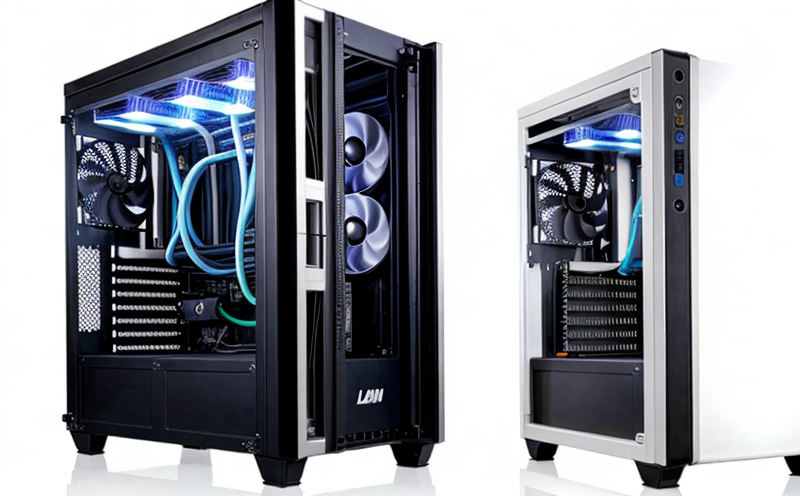EN 14511 Room Air Conditioner Performance Testing
The European Standard EN 14511 provides a comprehensive framework for the performance and capacity testing of room air conditioners. This standard is crucial for ensuring that air conditioning units meet stringent energy efficiency requirements, operate reliably under various conditions, and adhere to international best practices.
EN 14511 covers a range of tests including energy efficiency assessment, capacity measurement, noise level evaluation, and durability checks. It ensures that room air conditioners are capable of delivering the expected performance levels in real-world operating conditions. Compliance with this standard is essential for manufacturers to demonstrate product quality and meet regulatory requirements.
The testing process involves multiple stages where each step contributes to a thorough assessment of the unit's capabilities. The first phase includes setting up the test environment according to specified parameters defined by EN 14511. This setup ensures that all variables affecting performance are accounted for, allowing accurate measurement and evaluation.
The core testing procedures involve subjecting the room air conditioner to various operating modes while monitoring its response under controlled conditions. For instance, the unit may be tested in cooling mode at different ambient temperatures to determine how efficiently it can lower the indoor temperature. Similarly, heating tests are conducted to assess energy consumption and effectiveness.
During these tests, critical performance metrics such as COP (Coefficient of Performance), EER (Energy Efficiency Ratio), and sound pressure level are meticulously recorded. COP measures the efficiency by which electrical power is converted into cooling capacity, while EER reflects this ratio under specific conditions. Sound pressure levels ensure that the noise generated does not exceed acceptable limits, enhancing user comfort.
Furthermore, durability tests simulate long-term usage scenarios to evaluate the longevity and reliability of the components. These tests are conducted in accelerated environments where factors such as temperature cycling and humidity exposure mimic prolonged operational stress without requiring extended real-world use.
The results from these rigorous tests provide manufacturers with valuable insights into their product's performance, helping them identify areas for improvement. Compliance with EN 14511 not only enhances brand reputation but also facilitates market access by ensuring products meet stringent European standards.
For quality managers and compliance officers, understanding the nuances of this standard is vital as it impacts various aspects of product development and production processes. R&D engineers can leverage these test results to refine their designs, while procurement teams ensure that suppliers adhere to these high-quality benchmarks.
Applied Standards
The EN 14511 standard is meticulously designed to align with international best practices and regulatory requirements. It draws heavily from ISO standards, ASTM guidelines, and other recognized international bodies to ensure comprehensive coverage of all relevant criteria.
The primary focus areas include energy efficiency, which is critical for reducing environmental impact while maintaining functionality; capacity measurement to guarantee consistent performance across different conditions; noise level evaluation to enhance user experience; and durability tests that simulate real-world usage scenarios. By adhering strictly to these standards, manufacturers can ensure their products meet the highest levels of quality and reliability.
Compliance with EN 14511 is not only a technical requirement but also a strategic decision aimed at maintaining market competitiveness. It demonstrates a commitment to excellence that resonates well with environmentally conscious consumers and regulatory authorities alike.
Benefits
Compliance with EN 14511 brings numerous benefits, both for manufacturers and end-users of room air conditioners. For manufacturers, it ensures that products meet stringent energy efficiency requirements, enhancing the overall marketability and reputation of their brand.
The standard also mandates rigorous testing procedures that help identify potential weaknesses in design or manufacturing processes early on, allowing companies to address these issues before they become significant problems. This proactive approach not only improves product quality but also reduces warranty claims and customer dissatisfaction.
For end-users, compliance with EN 14511 translates into better-performing products that offer improved comfort levels and lower operating costs. Consumers can trust that the units they purchase are reliable, efficient, and environmentally friendly. Moreover, meeting these standards helps manufacturers comply with local regulations, thereby avoiding potential legal issues or market exclusions.
The standard also fosters innovation by setting high benchmarks for performance and efficiency. Manufacturers are encouraged to push technological boundaries in order to meet the stringent requirements set forth by EN 14511. This competitive pressure drives continuous improvement within the industry, ultimately benefiting all stakeholders involved.
Industry Applications
The application of EN 14511 spans across various sectors including residential buildings, commercial establishments, and industrial facilities. In residential settings, room air conditioners play a crucial role in maintaining comfortable indoor temperatures year-round. By ensuring these units meet the stringent requirements set by this standard, manufacturers can provide homeowners with reliable equipment that contributes to both comfort and energy savings.
In commercial environments such as offices or retail spaces, proper ventilation is essential for employee productivity and customer satisfaction. Room air conditioners equipped with high-efficiency filters help maintain clean indoor air quality, which is particularly important in densely populated areas. Compliance with EN 14511 ensures that these systems operate efficiently, reducing energy consumption and operational costs.
For industrial applications, where large volumes of fresh air are required for processes involving sensitive materials or equipment, the robust design and durability mandated by this standard become even more critical. The ability to withstand harsh conditions while maintaining consistent performance is paramount in ensuring smooth operations across all sectors.





